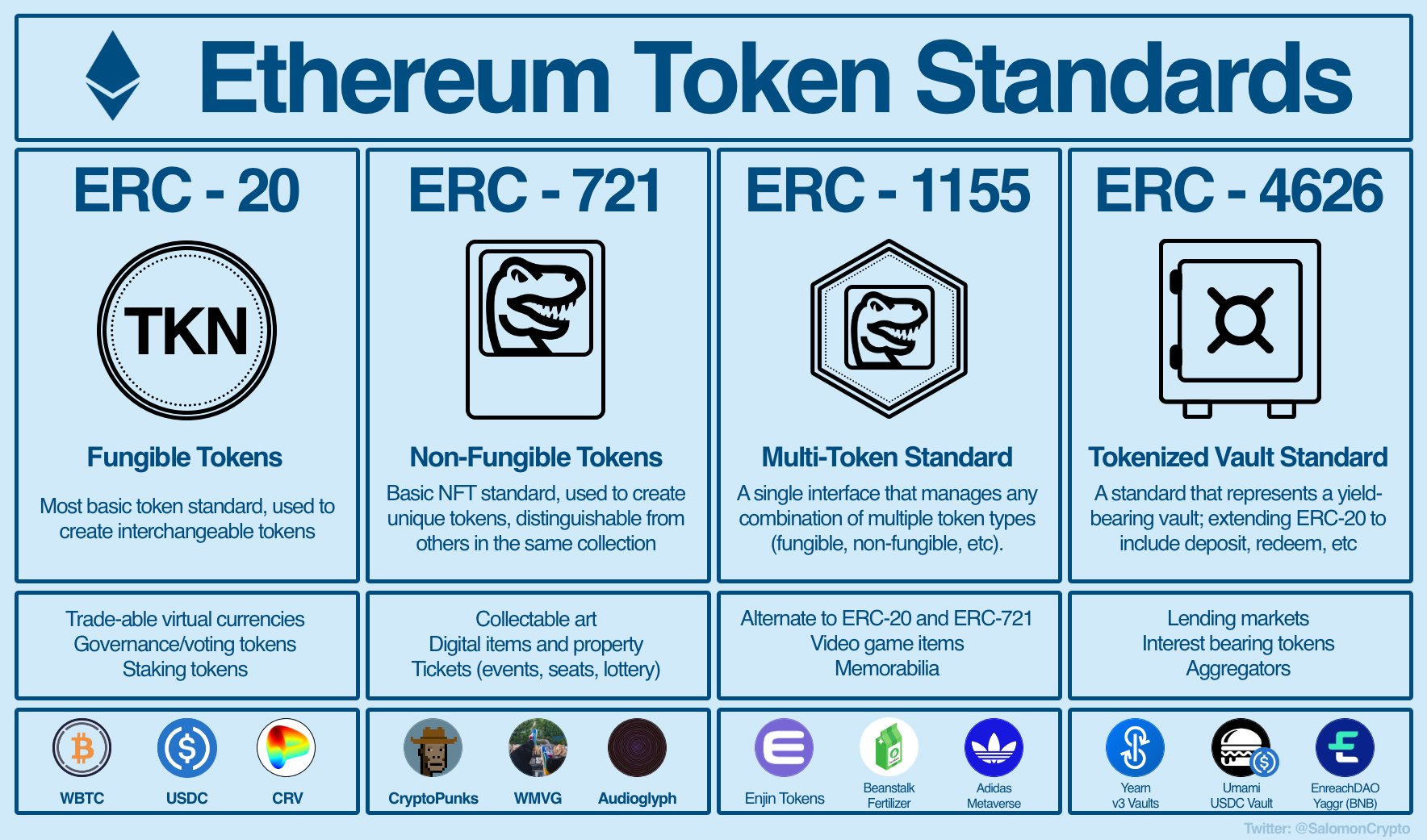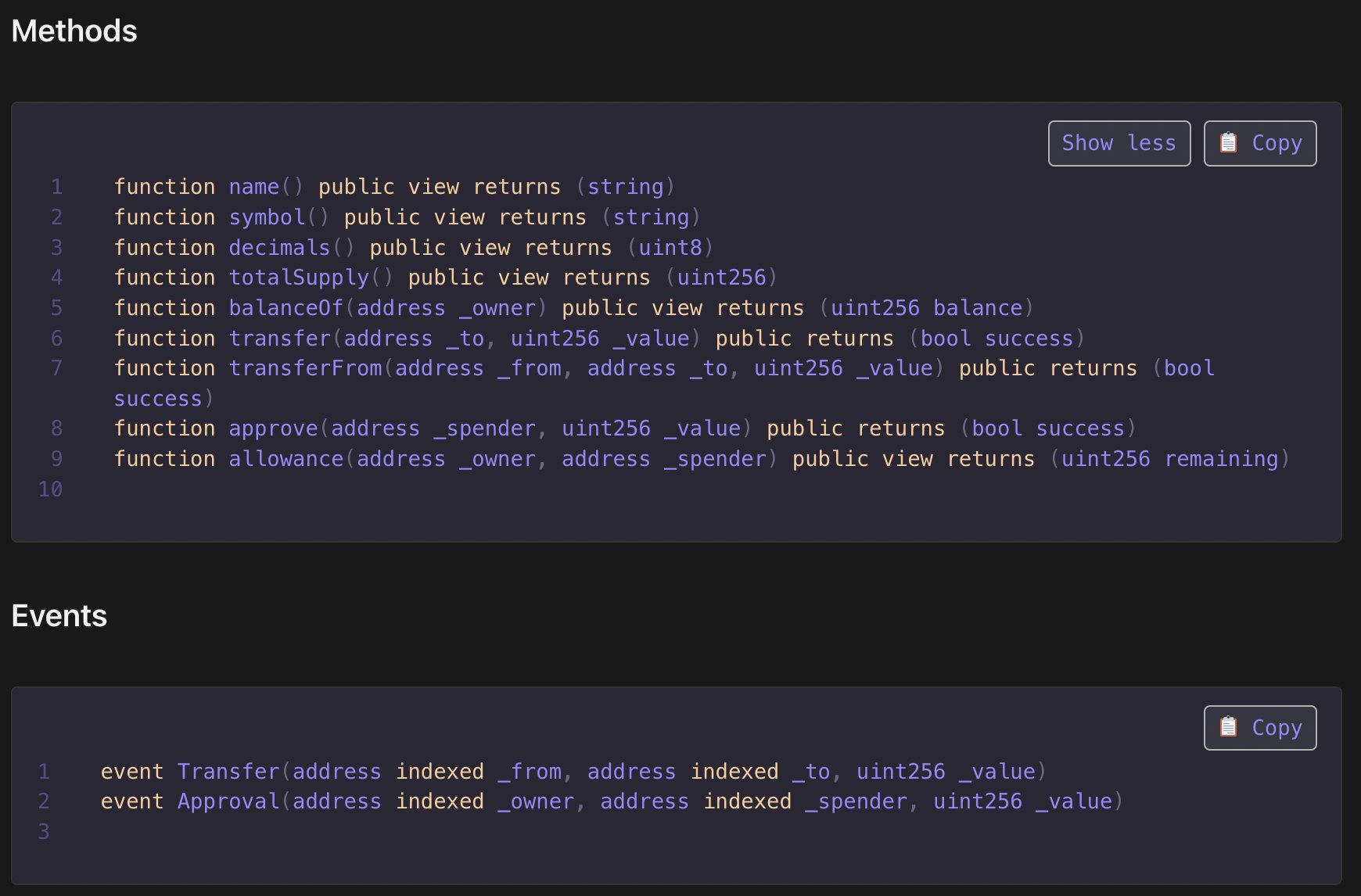
¶ Title
¶ Prerequisites
¶ Prereq 1
Lorem ipsum
¶ The World Computer
Ethereum exists between a network of 1,000s of computers (nodes), each running a local version of the Ethereum Virtual Machine (EVM). All copies of the EVM are kept perfectly in sync.
Any individual EVM is a window into the shared state of the World Computer.
¶ APIs
Application Programming Interfaces (APIs) are the mechanism by which programs communicate and developers coordinate.
A developer will camouflage as much of the inner workings of their program as much as possible. Communication is maximally simplified and streamlined.
On the World Computer, we use APIs all over the place:
- to integrate protocols
- to transfer assets
- to build composable investments
- to borrow, lend and collateralize assets
Basically anything that happens on chain is either an API or is directly summarized by an API
¶ Token Standards
In fact, you can think of the different token types as a piece of code that conforms to an API template.
If a smart contract adheres to a specific template, it is that kind of token.
This is the template for an ERC-20 token.

In order to create an ERC-20, a developer has to create code to be executed for all of these methods and events
All ERC-20s support these functions; a (different) developer can count on having these when using any ERC-20.
¶ ERC-20
ERC-20 tokens are the most basic token standard, representing the vast majority of tokens available today.
This includes everything from governance tokens, ve-tokens, stablecoins, etc.
ETH is not an ERC-20 token, or a token at all. ETH is something special. In order to use ETH in De-Fi, we generally need to use WETH.
¶ ERC-721
ERC-721 tokens are most commonly referred to as NFTs (Non-Fungible Tokens).
These tokens represent unique or identifiable items (usually) within a collection. This includes PFPs, collectable art, property, etc.
¶ ERC-1155
ERC-1155 tokens combine properties of both ERC-20 and ERC-721 tokens, providing a single interface that manages any combination of these token types.
This can be used as a more modern alternative for ERC-20 or ERC-721, and has unique properties optimized for gaming.
¶ ERC-4626
ERC-4626 is a newer token standard, describing yield-bearing vaults.
The standard provides a common interface for ERC-20 tokens deposited in (or redeemed from) a vault to earn yield. This can include yield farming and aggregation, but can be generalized to much more.
¶ ERC-777
ERC-777 is a very configurable but rarely used token standard.
It provides updates to ERC-20, allowing devs to attach code that runs when the token is sent and/or received.
Although it is included on the Ethereum Foundation official list, we rarely see ERC - 777 tokens in practice.
¶ ERC-3475
ERC-3475 is the latest ERC token standard, becoming official August 24th, 2022.
ERC-3475 is the bond token standard, a new, multi-layered structure that allows an asset to issue and service debt without fracturing liquidity.
¶ Composability
Quick history lesson:
First, The Before Time.
Then... Alan Turing → mechanical computing → computers → networked computers → ARPANET→ World Wide Web → Internet → Bitcoin
That brings us to roughly 2014, when VitalikButerin introduced us to ETH.
This is the beginning of the story.
Ethereum is just the infrastructure, now we must build on it.
The more we set standards at the foundation, the higher we can go
Computer science is the magic, the developers are the wizards, abstraction is the spell.
Composability is the goal.
¶ Resources
Source Material - Twitter Link
Source Material - PDF